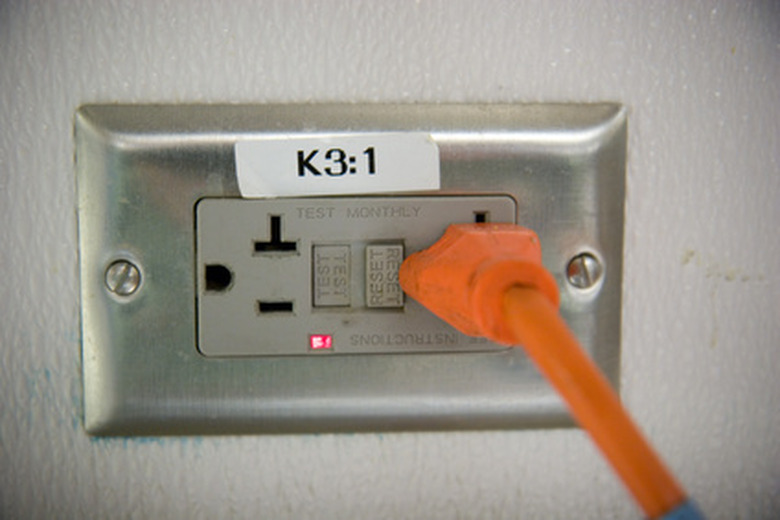How To Boost Amperage
Ohm's Law defines the relationship between voltage, amperage and resistance in an electrical circuit. These three properties are forever joined at the hip – any change in one of them affects the other two directly. Voltage (V) is the measure of amperage (I) multiplied by the amount, or level of resistance (R ). These three variables are related to each other mathematically according to the following equation, known as Ohm's Law: V=IR. Therefore boosting the amperage in an electric circuit can be accomplished through two separate means.
Step 1
Because voltage equals the amperage multiplied by the resistance in a circuit, if the voltage remains constant and the resistance is dropped, the amperage across the circuit must increase. Resistance in an electrical circuit can be reduced by increasing the size of the conductors, that is, by using a larger diameter copper conductors.
Step 2
If the electrical circuit contains IC chips called resistors, resistance can also be lowered by using a lower rated resistor, for example, changing a 4 ohm resistor to a 2 ohm resistor. In a circuit, cutting the resistance by half and leaving the voltage unchanged will double the amperage across the circuit.
Step 3
If the circuit's resistance remains unchanged, the amperage in a circuit can be increased by increasing the voltage. If the electrical circuit were compared to a pipe carrying water, the voltage represents the pressure of the water, the resistance represents the pipe's diameter, and the amperage represents the amount of water flowing in the pipe per time interval. If the pipe remains unchanged and the water pressure doubles, the amount of water flowing through the pipe would also increase.
Things Needed
- An electrical circuit
- Variable control power source
- Various size electrical conductors (wires)
References
Cite This Article
MLA
Burns, Timothy. "How To Boost Amperage" sciencing.com, https://www.sciencing.com/boost-amperage-7913226/. 24 April 2017.
APA
Burns, Timothy. (2017, April 24). How To Boost Amperage. sciencing.com. Retrieved from https://www.sciencing.com/boost-amperage-7913226/
Chicago
Burns, Timothy. How To Boost Amperage last modified March 24, 2022. https://www.sciencing.com/boost-amperage-7913226/
